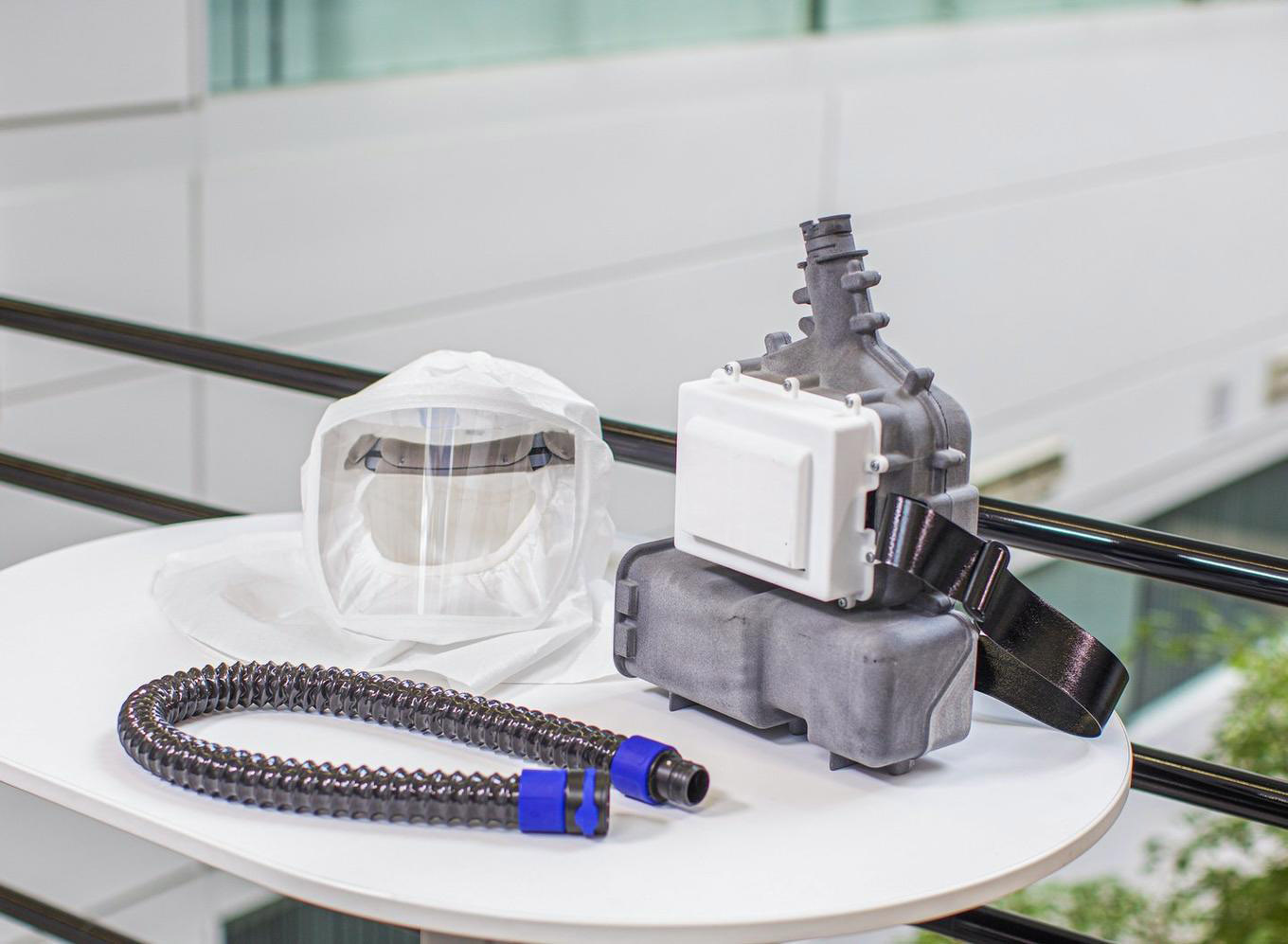
NIOSH-approved respirators are available in many types, models, and sizes from many manufacturers for a wide variety of uses in many occupational settings. The most common types of respirators in healthcare are N95 filtering facepiece respirators (FFRs), surgical N95 FFRs, and PAPRs.
Of these three options, many healthcare practitioners are the least familiar with PAPRs. A PAPR is an air-purifying respirator that uses a blower to force air through filter cartridges or canisters and into the breathing zone of the wearer. This process creates an air flow inside either a tight-fitting facepiece or loose-fitting hood or helmet, providing a higher assigned protection factor (APF) than the reusable elastomeric non-powered air-purifying half facepiece (half mask) or N95 FFRs. A PAPR can be used for protection during healthcare procedures in which HCP are exposed to greater risks of aerosolized pathogens causing acute respiratory infections.
A PAPR may have a tight-fitting half or full facepiece or a loose-fitting facepiece, hood, or helmet. It has an OSHA APF of at least 25 for loose-fitting hoods and helmets, 50 for tight-fitting half masks, and 1,000 for full facepiece types and some loose-fitting hoods and helmets where the manufacturer’s testing has demonstrated an APF of 1,000.
CDC has published recommendations for HCP respiratory protection and of commonly used NIOSH-approved, FDA-cleared, single-use filtering facepiece N95 surgical respirators.1 Properly fitted FFR and half facepiece reusable elastomeric respirators are expected to reduce exposures to one-tenth of the concentration that is in the air, based on OSHA’s APF of 10 for these respirator types. All PAPR APFs exceed the APF of 10 for N95 FFR or elastomeric half facepiece respirators.2
PAPRs reduce the aerosol concentration inhaled by the wearer to at least 1/25th of that in the air, compared to a 1/10th reduction for FFRs and elastomeric half facepiece air-purifying respirators. OSHA assigns an APF of 1,000 to some PAPRs with hoods or helmets. However, employers must have evidence provided by the respirator manufacturer that testing of these respirators demonstrates performance at a level of protection of 1,000 to receive an APF of 1,000. Absent such evidence, PAPRs with loose-fitting helmets or hoods have an APF of 25. When used properly, PAPRs provide increased protection and decrease the likelihood of infection transmission to the wearer as compared to FFRs and half face reusable elastomeric respirators.
A variety of NIOSH-approved PAPR designs are available. Examples include those with tight-fitting facepieces and loose-fitting hoods or helmets, blower styles, battery types (e.g., Lithium ion, Nickel-Metal hydride, Nickel Cadmium) or over-the-counter disposable batteries, and high efficiency (HE) filters or filter cartridges. HE filters are 99.97% efficient against 0.3 micron particles. A PAPR may have adjustable air flow rates for added comfort and a range of cartridge protections some of which are solely for particulates (HE filters) and others which also protect against chemical gases and vapors that can be used to help protect against hazards associated with the handling of certain hazardous drugs and cleaning/disinfecting operations. The substantial PAPR product diversity provides flexibility to customize protection needed in a healthcare setting.
Loose-fitting NIOSH-approved PAPRs have several advantages over tight-fitting non-powered approved air-purifying respirators, including3:
A fit test is not required for PAPRs with loose-fitting headgear such as hoods and helmets.
PAPRs with loose-fitting headgear can be worn with a limited amount of facial hair.
Some models offer cartridges for particulate and/or gas/vapor protection.
Hooded PAPRs and PAPRs with helmets may offer limited to significant splash protection for the face and eyes.
PAPR systems have assigned protection factors (APF) of at least 25 (and up to 1,000 in some cases, as described above).
Some PAPRs have disposable, loose-fitting headgear and patients can see the face of the HCP, providing for better interpersonal communication.
Most PAPR components can be cleaned, disinfected, re-used, and shared.
PAPRs use only HE filters, which have a greater filtration efficiency against the smallest pathogen particles compared to N95 FFRs.
A PAPR may be less taxing from a physiological/breathing resistance perspective than other respirators.
The facility should assess the limitations and factors associated with using PAPRs when considering their use in healthcare settings, including:
A PAPR may interfere with the HCP’s visual field because of the limited downward vertical field of view.
The HCP’s ability to hear may be reduced because of the blower noise, and noise induced by the movement of a loose head covering.
The HCP’s ability to use of a stethoscope may be limited.
PAPR batteries must be recharged or
Your email address will not be published. Required fields are marked